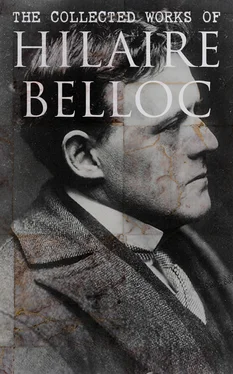34.The track here is well marked on the ½500 Ordnance map of Kent (XXVIII. 12, XXVIII. 16), first as a footpath (on field 73), then right across the small plantation to the east, past a clump of trees a little east of that (where it is marked by a distinct embankment), and so to the lane which has no local name, but bounds to the north the field numbered 19.
35.Not quite half a mile of it. Snodland itself stands on gravel, which just touches the river at the site of the church and ferry.
36.The full trace of this crossing may be followed in the ½500 Ordnance map for Kent (XXX. 3) as follows:—From Wrotham to ( a ) The Kentish Drover . The significance of this sign is the use of the Old Road by drovers in order to avoid turnpike charges, ( b ) on north of the Trottescliffe megalithic monument , under the old quarry there, on past Bunkers to the cross-roads. Then ( c ) leave present path and go a little east of south under another old pit , and so diagonally across field marked 79 (on map XXX. 4), thus reaching Paddlesworth Farm, when from the ( d ) ruined chapel the track is marked by the division between fields 72 and 73 till Mark Farm is reached, whence the track is a plain road ultimately becoming the High Street of Snodland. After crossing the river it is a road all the way, passing at last between the two megalithic monuments of the hundred stones and Kit's Coty House.
37.Thus in the immediate neighbourhood alone were the Roman remains of Snodland, of Burham, of Hoborough. The group of a dozen or more round Maidstone, the bronze celts found at Wrotham. Oldbury Camp, the group of Roman foundations and coins at Plaxtol, the British and Roman coins found at Boxley. The megalithic monuments of Addington, of Coldrum, Kit's Coty House, and the hundred stones. The group already mentioned at Aylesford, the camp at Fosbery, the Roman pottery at Thurnham—and this is a very incomplete list.
38.The lane is continuous after Boxley, though not everywhere equally important. North of Hollingbourne it is but a path. It soon becomes a lane again, is enclosed in the private grounds of Stede Hill (Kent,½500 Ordnance map, XLIII. 12), and is but a track for three-quarters of a mile from Lenham quarries. It is lost after Cobham Farm, and reappears as a long hedge and division between fields, and after the pits at Hart Hill becomes a lane again.
39.It has enemies, like all good things. Its neighbours to the south have sung for centuries:—
'Dirty Charing lies in a hole,
Has but one bell, and that she stole.'
40.The ½500 Ordnance map of Kent (LV. 10) seems to me to commit a slight error at this point. There is no need to take the Old Road through the gas works. It obviously goes south of the lodge, curls northwards on leaving the park, and is lost in the buildings near the smithy. After this it forms the lane which bounds to the north the fields marked 111 and 119.
41.Here again the 25-inch Ordnance for Kent (LV. 10) draws a conventional straight line which seemed to us erroneous. We took it to go from near Brewhouse Farm along the raised footpath to Whitehill, and then (LV. 6) under the pit, across fields 13 and 67 (not down by Soakham Farm as the map gives it), and so on to the turf where is a raised embankment and a characteristic line of yews.
42.Professor Boyd-Dawkins in connection with his examination of the iron implements found in Bigberry Camp has traced the Old Road for a mile or two westward. The map may be seen in Owens College at Manchester.
43.I would trace it more or less as follows on the 25-inch Ordnance map for Kent (XLIV. 16):—Through the orchards marked 378, 379a there just south of Bowerland, down the valley beyond, and up to Knockholt. But it is all cultivated land, and except for a footpath at the end there is no trace left.
Table of Contents
Table of Contents
Preface
I. The Political Theory of the Revolution
II. Rousseau
III. The Characters of the Revolution
IV. The Phases of the Revolution
V. The Military Aspect of the Revolution
VI. The Revolution and the Catholic Church
Table of Contents
The object of these few pages is not to recount once more the history of the Revolution: that can be followed in any one of a hundred text-books. Their object is rather to lay, if that be possible, an explanation of it before the English reader; so that he may understand both what it was and how it proceeded, and also why certain problems hitherto unfamiliar to Englishmen have risen out of it.
First, therefore, it is necessary to set down, clearly without modern accretion, that political theory which was a sort of religious creed, supplying the motive force of the whole business; of the new Civil Code as of the massacres; of the panics and capitulations as of the victories; of the successful transformation of society as of the conspicuous failures in detail which still menace the achievement of the Revolution.
This grasped, the way in which the main events followed each other, and the reason of their interlocking and proceeding as they did must be put forward—not, I repeat, in the shape of a chronicle, but in the shape of a thesis. Thus the reader must know not only that the failure of the royal family's flight was followed by war, but how and why it was followed by war. He must not only appreciate the severity of the government of the great Committee, but why that severity was present, and of the conditions of war upon which it reposed. But in so explaining the development of the movement it is necessary to select for appreciation as the chief figures the characters of the time, since upon their will and manner depended the fate of the whole. For instance, had the Queen been French either in blood or in sympathy, had the King been alert, had any one character retained the old religious motives, all history would have been changed, and this human company must be seen if its action and drama are to be comprehended.
The reader interested in that capital event should further seize (and but too rarely has an opportunity for seizing) its military aspect; and this difficulty of his proceeds from two causes: the first, that historians, even when they recognise the importance of the military side of some past movement, are careless of the military aspect, and think it sufficient to relate particular victories and general actions. The military aspect of any period does not consist in these, but in the campaigns of which actions, however decisive, are but incidental parts. In other words, the reader must seize the movement and design of armies if he is to seize a military period, and these are not commonly given him. In the second place, the historian, however much alive to the importance of military affairs, too rarely presents them as part of a general position. He will make his story a story of war, or again, a story of civilian development, and the reader will fail to see how the two combine.
Now, the Revolution, more than any other modern period, turns upon, and is explained by, its military history. On this account has so considerable a space been devoted to the explaining of that feature.
The reader will note, again, that the quarrel between the Revolution and the Catholic Church has also been dealt with at length.
To emphasise this aspect of the revolutionary struggle may seem unusual and perhaps deserves a word of apology.
The reader is invited to consider the fact that the Revolution took place in a country which had, in the first place, definitely determined during the religious struggle of the sixteenth and seventeenth centuries to remain in communion with Rome; and had, in the second place, admitted a very large and important body of converts to the doctrines of the Reformation.
Читать дальше












